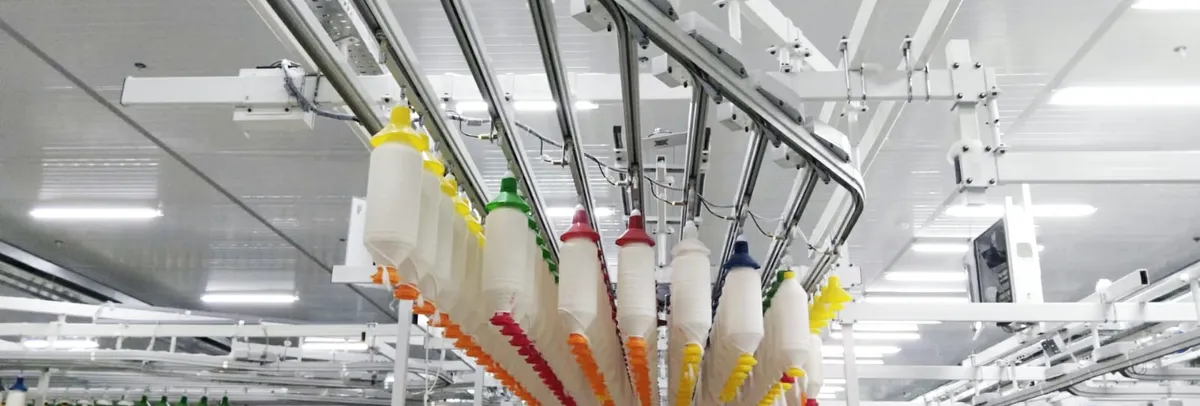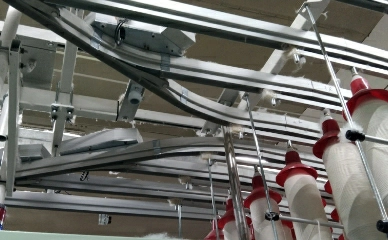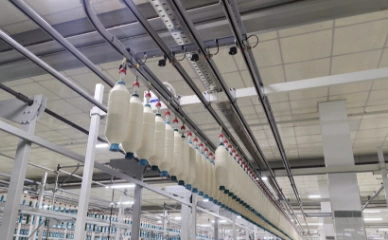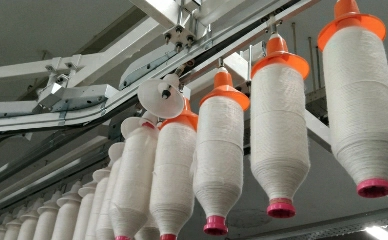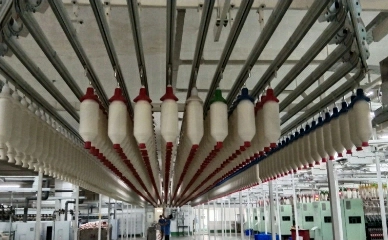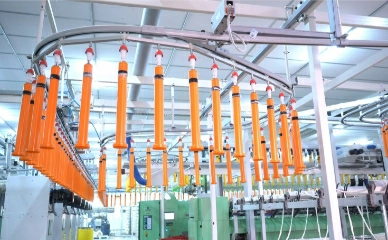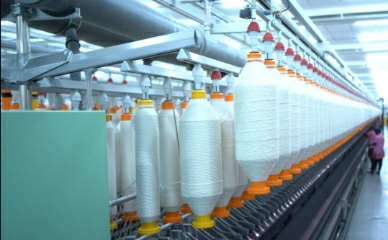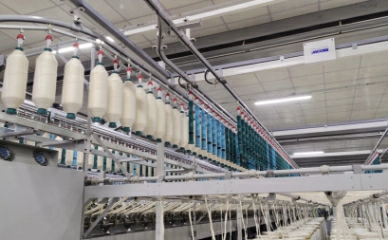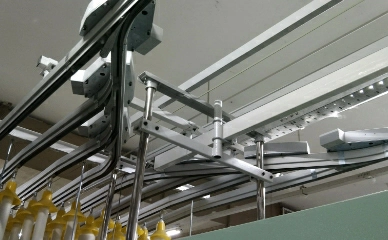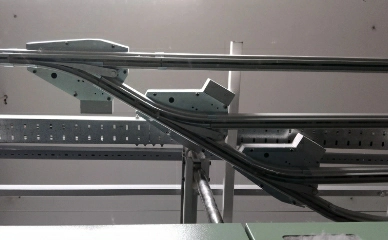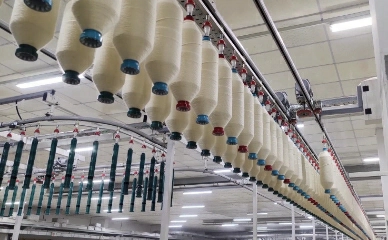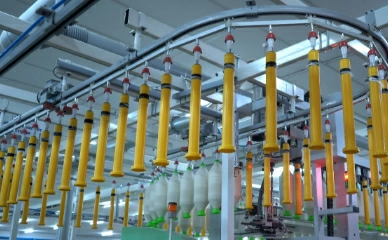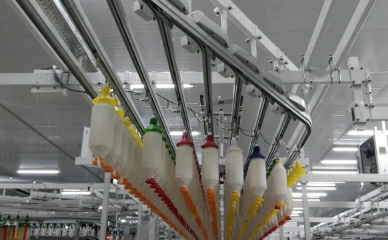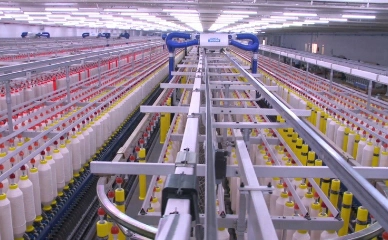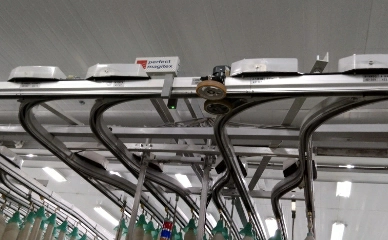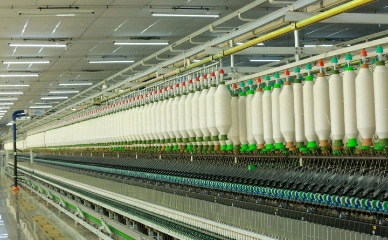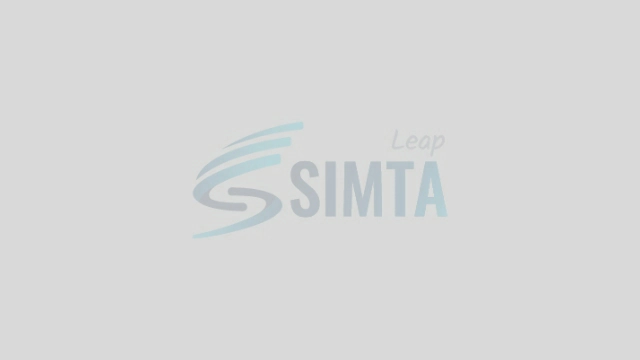
SIMTA Jacobi Bobbin Transport Systems have revolutionised the global spinning industry, enabling our transformation from product manufacturers to solution partners for the textile industry. Recognised as the best automatic bobbin transport system in India, our solutions are trusted across the sector. Today, customer organisations rely on our 30-year expertise for strategic inputs before installing these complex automated systems. Our innovations have resulted in
- Developing unique, custom-built solutions from 2008–2018 to meet every challenge in the textile industry
- A deep understanding of India and other country-specific work conditions
- The SIMTA Jacobi BTS has become an industry mandatory
- Proven expertise across all customer categories and geographies
- Solutions from fully manual systems to completely automated ones
Bobbin Transport Manual System
Flexible Connection
The operator fills the bobbin trains at the roving frames with bobbins. The train, designed for efficient handling by BTS Manual With Buffer Manufacturers in India, is then manually pulled to the spinning frame. The operator of the spinning frame exchanges the full bobbins for empty bobbins. The train with empty bobbins is pulled back to the roving frames.
Bobbin Transport Semi-automatic system
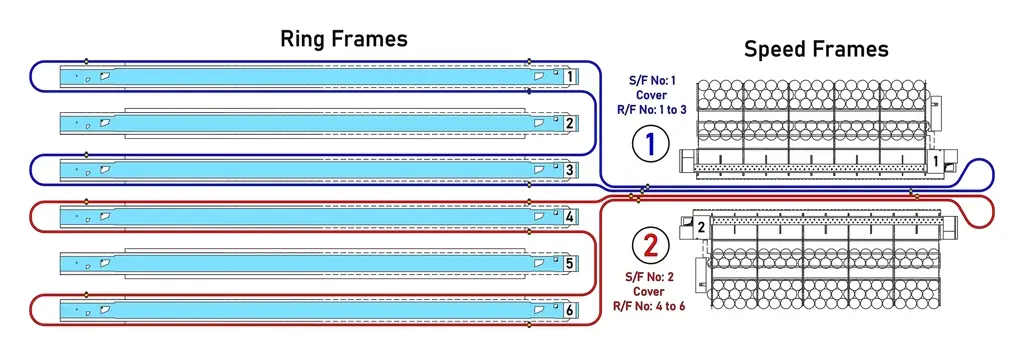
- Partly automated : Either Roving Area (or) storage area -> Ring spinning area - Fixed connection/Flexible Connection
- The bobbins are doffed by hand at the roving frames and hung up into the rail in front of them
- The operator pushes a button to drive the train to the storage area automatically
- The storage is able to store the loaded trains and can be used for trains with full bobbins as well as for trains with empty tubes or un-cleaned tubes
- If a ring spinning machine needs full bobbins, a button at the ring frame is pushed and the train with full bobbins are automatically driven to the ring spinning frame
- Inside the creel the train can be moved easily forward and backward manually to the place where full bobbins are automatically driven to the ring spinning frame
- If all bobbins are changed, the train is driven back to the storage area automatically by pushing a button.
- While the train with uncleaned tubes is waiting for the next doffing the tubes have to be cleaned manually
- After finishing the cleaning, the train can be released and called from the operator at the roving frame by pushing a button automatically
- A computer system controls via monitor drive motors as well as electric point switches and shows what happens in production
- A semi-automatic system is very flexible and each roving frame can feed every ring spinning frame
Bobbin Transport Fully Automatic System
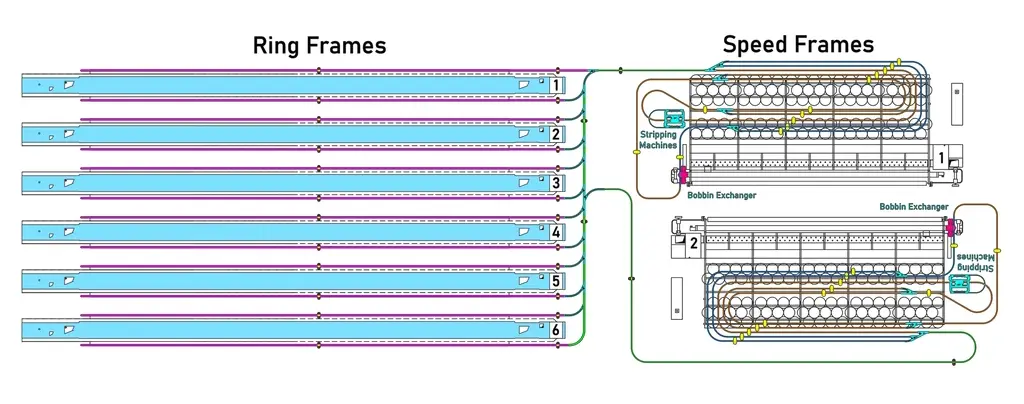
- The bobbins are doffed automatically by a bobbin changer at the roving frames and hangs the full bobbins up into the rail in front of them
- The trains are driven automatically to the storage area
- The storage is able to store the loaded trains with different yarn qualities
- Different qualities should have different colours of bobbin tubes for better identification
- If a ring spinning machine needs full bobbins, a button at the ring frame is pushed and a train with full bobbins is automatically driven to the ring spinning frame
- The control system makes sure that the train with the right yarn quality is sent to the spinning frame
- Inside the creel the train can be moved easily forward and backward from the operator to the place where full bobbins are needed
- If all bobbins are changed, the train is driven back to the storage area automatically by pushing a button
- While the train with uncleaned tubes is waiting for the next doffing the tubes will be cleaned automatically by a bobbin cleaning machine
- After finishing the cleaning, the train can be released and called from the roving frame automatically
- A computer system controls via monitor drive motors as well as electric point switches and shows what happens in production
- So a fully automatic system is very flexible, nearly complete-automatic and each roving frame can feed every ring spinning frame
Automatic Creel Changing Mechanism
Simta is a pioneer in giving solutions to the customers with the latest technology and user-friendly products at an affordable cost.
The Automatic creel change in ring frames are popular in European countries. Now only in India we are thinking about this type of system.
The Automatic creel change is done, particularly in rows or blocks, to ensure smooth working. This is done to have a controlled production of particular lots without any excess material and also ensure the rovings are free from manual handling. If the roving is incorrectly treated or is kept too long in intermediate storage, damage and soiling will occur. Horizontal transport, uncontrolled intermediate storage, and any kind of contact will damage the roving and cause quality deterioration.
As the roving is a more delicate product and gives good quality when it is handled correctly without touching its surface, Simta ensures to transfer this quality material without affecting its surface to the Ring frame.
The Auto creel change mechanism gives unique features as below..
- Controlled and regular changes of Bobbin in the ring frame
- No wastages of roving during the lot change
- Easy monitoring of lots and avoid material mix-up
- Reduces the intervention of human
- The Bobbin will group feed in the ring frame through FIFO
- Maximize production capacity and ensure smooth bobbin transfer
- Move different lots at the same time
Products
-
Textile Machinery and Accessories Division
- Spindle Tapes
- Flocked Clearer Rollers
- Flocked Clearer Roller Cleaning Machines
- OHTCS
- Bobbin Transport Systems
- Cone Transport Systems
- Auto Packing

